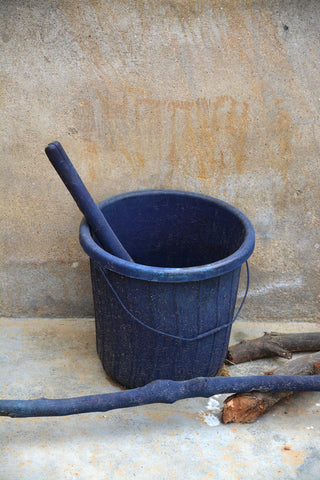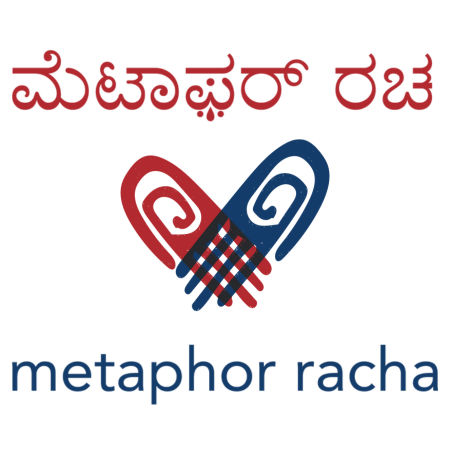We have tried our best to compress the entire exhaustive process of Dabu to a more readable format below, We hope to garner your support towards this craft and its documentation through our work.
Dabu is a resist print technique. It implies, covering a portion of the cloth, intended to be kept in the background color. This covering is mainly done by clay but also in wax. When the printed cloth is dyed, the color does not penetrate the portions which are resist printed. Through this process, the desired effect is obtained. The technique of the Dabu resist-print varies from one region to the other. Kalidar Dabu, Dolidar Dabu, Gawarvali Dabu, and Mein ki Dabu are some of the methods.
1. Kalidar Dabu: Kali mitti (clay) is soaked in water overnight. Next day, Chunna (Calcium hydroxide - to prevent cracking of clay), beedan (moth-eaten wheat flour), and Gond (Gum Arabica - to improve the adhesiveness) is added and kneaded to a fine paste. This mixture is once again rested for a night and next day it's strained with the help of fabric to remove unwanted foreign particles. This paste is diluted according to the required consistency and stored in a mud pot known as 'Mardia'. This mud resist is freshly prepared before it's used for printing.
2. Dolidar Dabu: It's the same as in Kalidar Dabu, except the kali Mitti (clay) is replaced by Multani Mitti (fullers earth clay)
3. Gawarwali Dabu: Guar bean (Lond bean) is roasted and ground to a fine powder and mixed with chunna and gond and then used for printing.
4. Mein ki Dabu: It's a wax-based resist print.

Chapai (Printing): The Dabu paste is printed on the fabric using a wooden block. Sawdust is manually sprinkled on the printed fabric and left to dry for a few hours. The sawdust also acts as a binder which prevents color penetration while dyeing. This printed and dried fabric is then dyed in the cold dye solution, indigo being common. This method leads you to a textile that has white/off-white print with an indigo background.


The printed cloth is folded neatly like sari pleats and lowered gently into the indigo tank. When the fabric is totally submerged in the tank the dyer still holding it under the liquid dye, opens each pleat to allow the fabric to have the indigo dye evenly. The dyer always unfolds the pleats gently to avoid cracking of ' Dabu '. The fabric is then taken out of the indigo vat, gently squeezed and opened out to react with the atmospheric oxygen and turn the reduced indigo into oxidized indigo. In order to get darker indigo blue, the fabric is again dipped in the tank, pulled out and oxidized. This process is repeated until the desired dark shade is achieved. The fabric is finally dried flat on the ground. Care is taken while dyeing or drying 'Dabu' does not get broken or cracked.


Apart from Neel (Indigofera Tictoria)which gives indigo blue, the other dye vats used are Haldi (Curcumma Longa) gives Turmeric yellow, Manjishta (Rubia Cordifolia) gives light red, Alizarine (synthetic dye mineral) gives red, Nashpal (Punica Grantum) gives greenish-yellow, Harda (Terminalia Chebula) gives greenish-mustard.

Dabu printing does not necessarily require the base fabric being harda treated, but at Metaphor Racha, we have harda treated the fabric to get a dark green color instead of indigo after dyeing. This adaption is purely from an aesthetic point of view. Kalidar Dabu technique is what we have used in our Dabu printing process. Though the process of Indigo dyeing and maintaining the vat is followed in the traditional method, the dyer whom we have worked with has replaced plant-based indigo with what is popularly known as German indigo.
